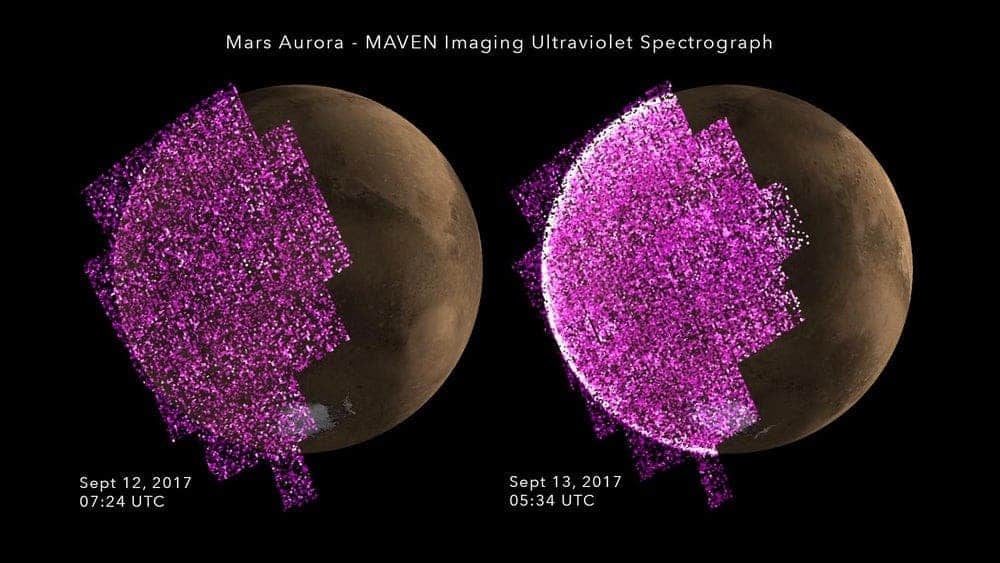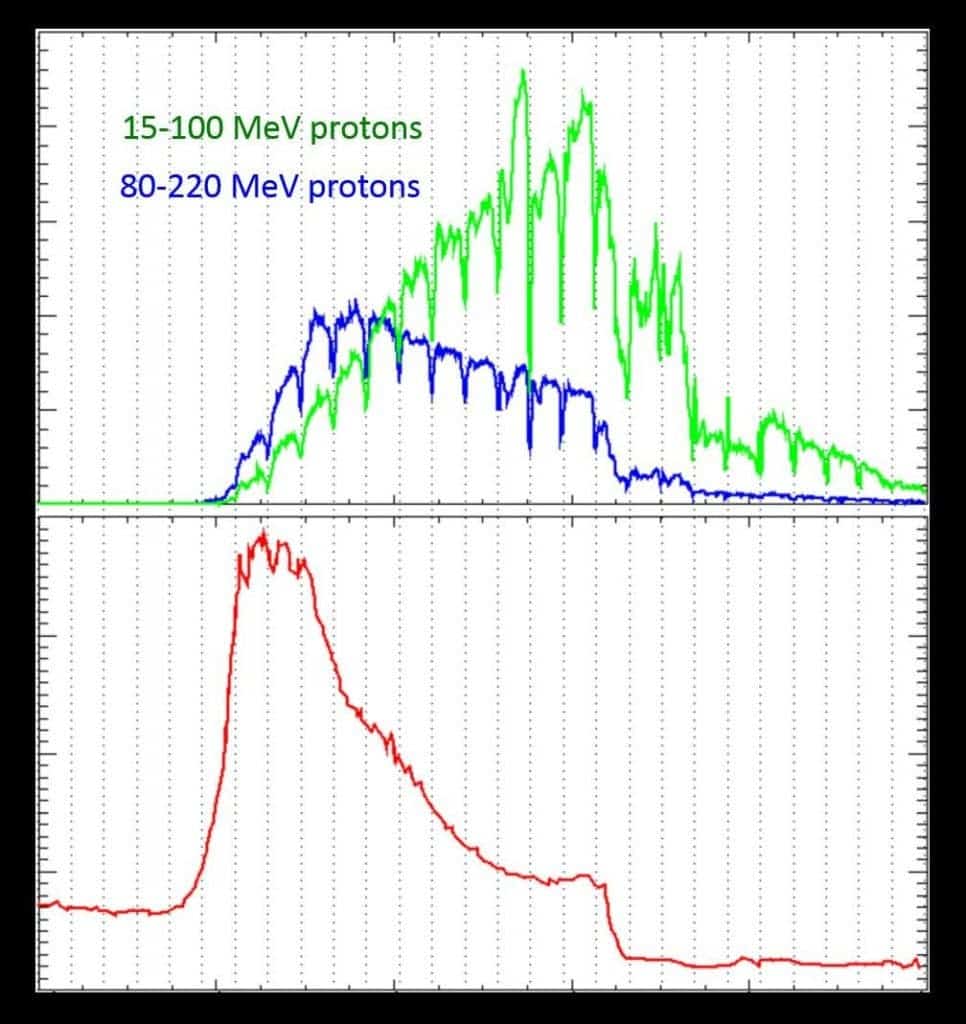
Between Sep. 12 and 13, the thin Martian atmosphere became 25 times brighter than usual, after an extremely powerful solar storm struck the planet. The event, which was recorded by NASA’s Maven spacecraft orbiting the red planet, triggered a global ultraviolet aurora but also doubled the amount of radiation that reached the planet’s surface.
“NASA’s distributed set of science missions is in the right place to detect activity on the Sun and examine the effects of such solar events at Mars as never possible before,” said MAVEN Program Scientist Elsayed Talaat, program scientist at NASA Headquarters, Washington, for NASA’s Mars Atmosphere and Volatile Evolution, or MAVEN, mission.
The solar storm lit up Mars like a light bulb
Even though this should be a quiet period in the Sun’s 11-year sunspot and storm-activity cycle, the coronal mass ejection (CME) which triggered the Martian aurora over the weekend was extremely powerful. A CME is a burst of charged particles, mostly electrons and protons, emanating from twisted magnetic field structures, or “flux ropes”, present on sun’s corona. These solar storms can vary in strength wildly and are known to impact Earth’s magnetosphere, being responsible for geomagnetic storms and the mesmerizing auroras. This month’s event was powerful and broad enough, for instance, to be detected on Earth despite the fact that the sunspots from which the CME gushed were on the opposite side of the Sun than we were facing.
“The current solar cycle has been an odd one, with less activity than usual during the peak, and now we have this large event as we’re approaching solar minimum,” said Sonal Jain of the University of Colorado Boulder’s Laboratory for Atmospheric and Space Physics, who is a member of MAVEN’s Imaging Ultraviolet Spectrograph instrument team.
“When a solar storm hits the Martian atmosphere, it can trigger auroras that light up the whole planet in ultraviolet light. The recent one lit up Mars like a light bulb. An aurora on Mars can envelope the entire planet because Mars has no strong magnetic field like Earth’s to concentrate the aurora near polar regions. The energetic particles from the Sun also can be absorbed by the upper atmosphere, increasing its temperature and causing it to swell up.”

While Maven was busy studying the pretty ultraviolet lights in Mars’ atmosphere, below on the surface NASA’s Curiosity rover picked up the radiation levels. Here on Earth, we’re protected from the sun’s bursts of plasma by the magnetosphere that shrouds our planet, blocking most radiation. Mars lost its magnetic fields ages ago, though, and it’s thus far more vulnerable to solar mood swings. In only one day, the radiation levels on the red planet‘s surface spiked more than double anything previously measured by the Curiosity rover’s Radiation Assessment Detector, or RAD, since the mission started in 2012.
“This is exactly the type of event both missions were designed to study, and it’s the biggest we’ve seen on the surface so far,” said RAD Principal Investigator Don Hassler of the Southwest Research Institute’s Boulder, Colorado, office. “It will improve our understanding of how such solar events affect the Martian environment, from the top of the atmosphere all the way down to the surface.”
However, the extreme radiation exposure raises new troubling concerns as to the habitability of Mars, one of the main fields of study for the Curiosity mission — that’s speaking about a planet with alarmingly high radiation levels hitting its surface already. On average, Mars sees 22 millirads per day, which works out to 8000 millirads (8 rads) per year. For comparison, human beings in developed nations are exposed to 0.62 rads per year. Studies suggest that the human body could withstand a dose of up to 200 rads without permanent damage. However, prolonged exposure to the kinds of levels detected on Mars significantly increases the risk of acute radiation sickness, increased risk of cancer, genetic damage, and even death.
“If you were outdoors on a Mars walk and learned that an event like this was imminent, you would definitely want to take shelter, just as you would if you were on a space walk outside the International Space Station,” Hassler said. “To protect our astronauts on Mars in the future, we need to continue to provide this type of space weather monitoring there.”
NASA, and likely SpaceX too which has a stated goal of building a martian colony numbering one million inhabitants, will have to bear these intense radiation fluctuations in mind when designing their habitats.


